|
|
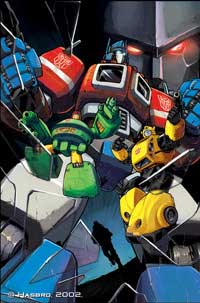 |
After an unsuccessful revival in the 1990s, by Marvel and Hasbro, the Transformers are back. Kids from the 1980s founded Dreamwave. Their found memories for the franchise kept them busy producing fan art and prints. Being a kid from the 80s, I remember the Transformers with the same warm and cozy feelings. However, in my case, beyond the series after the movie, I'm in uncharted land.
Perhaps this is why this series from Dreamwave is so cool for me. These are the characters I can name and whose designs and toys, I've gloated at for years. I don't know who Scorponok is, but I know Prowl and Thundercracker. Just like G.I.Joes, I only like when the characters' designs and gear are based on reality. When it gets too sci-fi, I lose interest.
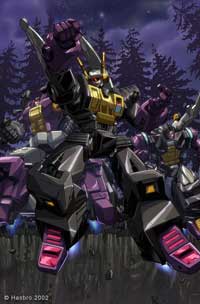 |
In this story, humans revive some Transformers after years of inactivity. The method used to revive the others is the good old Matrix of creation. It seems too simple for me. How does the Matrix fixes broken robots who exploded in a space ship explosion? If the robots were all in one piece, why didn't they revive themselves before? Why were they turned off, if they weren't much damaged?
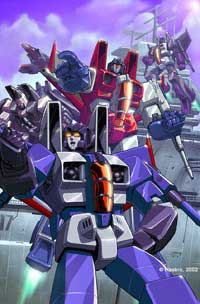 |
In past comics, humans' interaction with the Transformers has always been an important part of the story. In this story, the presence and effects of the giant robots is exploited to the fullest. It's fun to see a political story featuring the Transformers. However, some parts of the plot were shallower. The doomsday device set up by Megatron and the one set by the humans were very cartoon like and rushed.
The art team, composed of Dreamwave founder Pat Lee and several others were more than enough to match the plot by Chris Sarracini. Overall they updated the designs to account for the transforming features of the robots. At other times, they were also streamlined to illustrate the cartoon renderings better. For example, Optimus Prime's chest is arched, instead of being flat, like the first toys.
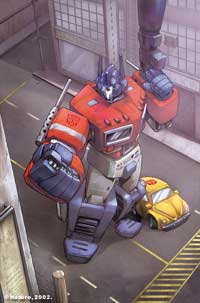 |
For example, Optimus was much smaller than one of Devastator's legs and could fit in one of his hands. I always understood that the gestalts did not increase in size when merged. Therefore I assumed that taller Transformers, like Megatron and Optimus, would look like toddlers next to them, not like action figures.
My second complaint is based on nostalgia. Half the fun of the Transformers was the vehicle and props modes into which they turned. Not much time was devoted to the Transformers in car or jet modes. It seems that the current artists on this series and others favour the giant robot aspect, to the detriment and loss of simple sport cars and cassette recorders. We didn't even get to see Megatron in gun mode.
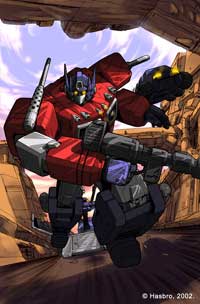 |
I prefer this type of colouring to most of what is available these days in comics. However, the folks at Dreamwave don't seem to catch all the tricks animation studios use to achieve this look. For example an important feature for this type of photography, is the use of focus and out of focus elements. There aren't much in the cartoons, but the quality DW wanted to achieve lends itself to this type of treatment.
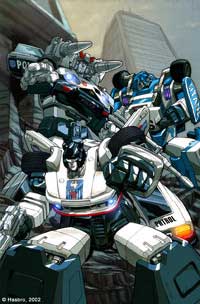 |
The trade paperback lists that vol. One and Two are included in this story. However, I thought it was a four-issue mini-series. Also, the story ends in a cliffhanger and I have not heard anything about the follow up. Simultaneously, Dreamwave is releasing many series based on the Transformers. I strongly suggest that they make a streamlined list available without the multiple iterations for casual fans.
Overall, this series was fun and allowed me to remember why I liked the Transformers as a kid.
© Copyright 2002-2024 by Toon Doctor Inc. - All rights Reserved. All other texts, images, characters and trademarks are copyright their respective owners. Use of material in this document (including reproduction, modification, distribution, electronic transmission or republication) without prior written permission is strictly prohibited.

